Motorcycles are a symbol of freedom and adventure, allowing riders to experience the open road like no other vehicle can.
To keep your motorcycle running smoothly and performing at its best, proper maintenance is crucial.
One essential component that often gets overlooked is the air filter. A clean air filter plays a vital role in ensuring optimal engine performance, fuel efficiency, and overall longevity of your motorcycle.
In this article, we will explore the importance of maintaining a clean air filter and provide a step-by-step guide on how to clean it using an air cleaner designed specifically for motorcycles.
What Happens If You Have a Dirty Motorcycle Filter

A dirty motorcycle air filter can have detrimental effects on your bike’s performance and longevity. When the air filter becomes clogged with dirt, dust, and debris, it restricts the airflow to the engine.
As a result, the engine receives insufficient air, leading to a rich fuel-air mixture and poor combustion. This can cause a decrease in power, reduced fuel efficiency, and potential engine damage over time.
Why your motorcycle needs clean air filters
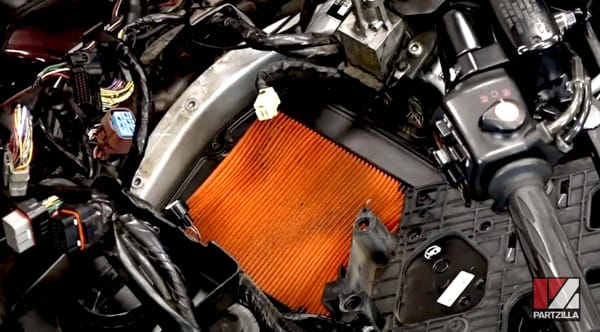
Clean air filters are essential for maintaining the performance and efficiency of your motorcycle. They prevent contaminants such as dirt, dust, and insects from entering the engine, ensuring only clean air is used for combustion.
By providing a clean air supply, the engine can operate optimally, delivering maximum power and fuel efficiency.
Moreover, clean air filters also protect the internal components of the engine from premature wear and damage caused by abrasive particles.
How to Clean an Air Filter with an Air Cleaner for Motorcycles
Cleaning your motorcycle air filter regularly will help maintain its effectiveness and prolong its lifespan.
Here is a step-by-step guide on how to clean your air filter using an air cleaner designed specifically for motorcycles:
1. Preparation
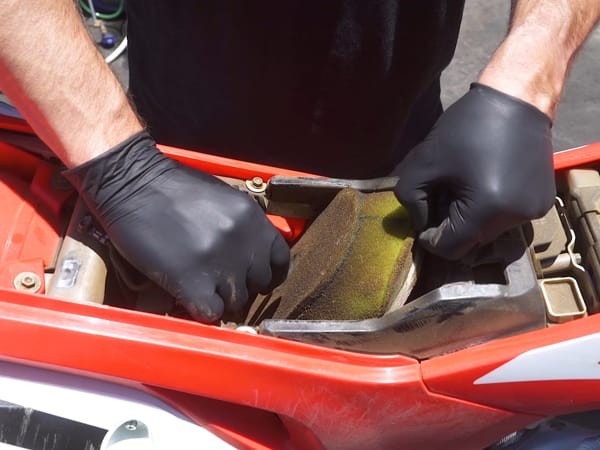
Ensure you have the necessary tools and equipment: an air cleaner specifically designed for motorcycles, a clean cloth, a bucket of warm water, and a mild detergent.
Read your motorcycle’s user manual for specific instructions and precautions regarding air filter maintenance.
2. Removing the Air Filter
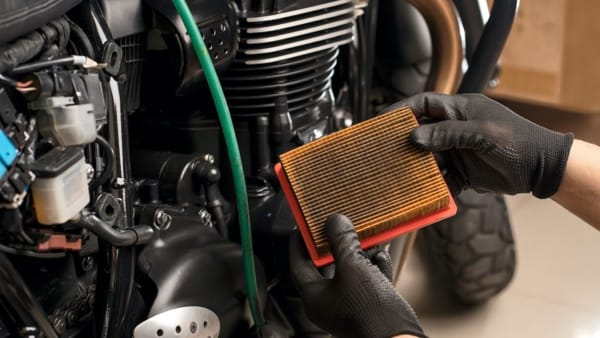
Locate the air filter housing, usually positioned near the engine or carburetor. Carefully remove the housing cover or unscrew any clamps or bolts securing it.
Gently take out the air filter from its housing, paying attention to its orientation.
3. Inspecting the Air Filter
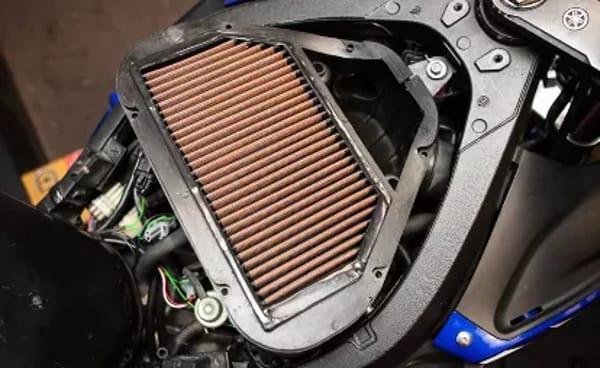
Examine the air filter for visible dirt, debris, and oil residue. Check for any signs of damage, such as tears or holes. If the filter is damaged, consider replacing it.
4. Cleaning the Air Filter

Fill a bucket with warm water and add a mild detergent, following the manufacturer’s instructions.
Immerse the air filter in the soapy water and agitate it gently to dislodge dirt and debris. Allow the filter to soak for a few minutes to loosen stubborn contaminants.
Rinse the air filter thoroughly with clean water to remove all traces of detergent.
5. Drying and Reinstalling the Air Filter
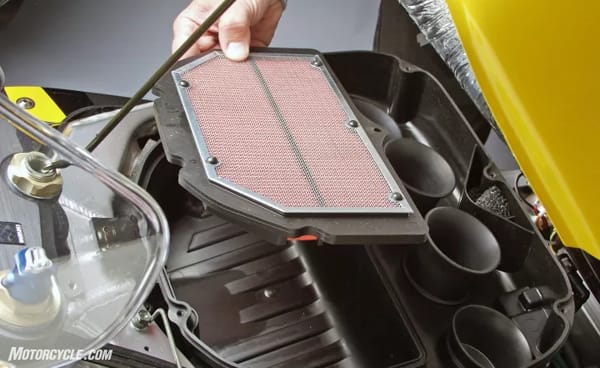
Gently squeeze excess water from the filter, taking care not to deform or damage it. Place the filter on a clean cloth and allow it to air dry completely. Avoid using compressed air or heat sources, as they may damage the filter.
Once the filter is completely dry, carefully reinstall it into the air filter housing, ensuring proper orientation and a secure fit. Reattach the housing cover or fasten any clamps or bolts to secure the filter in place.
6. Regular Maintenance and Replacement
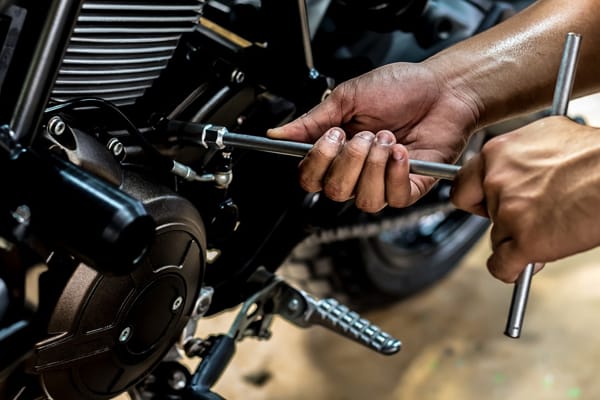
Make a note of the date when the air filter was cleaned to help you keep track of maintenance intervals
FAQ
What Does an Air Cleaner Do For a Motorcycle?
An air cleaner for a motorcycle filters the air before it enters the engine.
It removes contaminants, improves air quality, enhances engine longevity, ensures fuel efficiency, and adapts to different riding conditions. Regular maintenance is essential.
Do Motorcycle Air Filters Make a Difference?
Yes, motorcycle air filters make a significant difference. They improve engine performance, enhance fuel efficiency, protect against contaminants, adapt to different riding conditions, and save costs in the long run.
Originally posted 2023-07-01 19:14:06.
